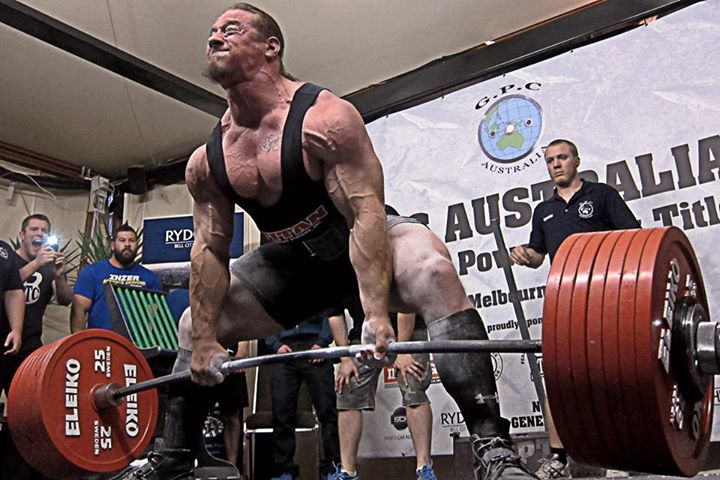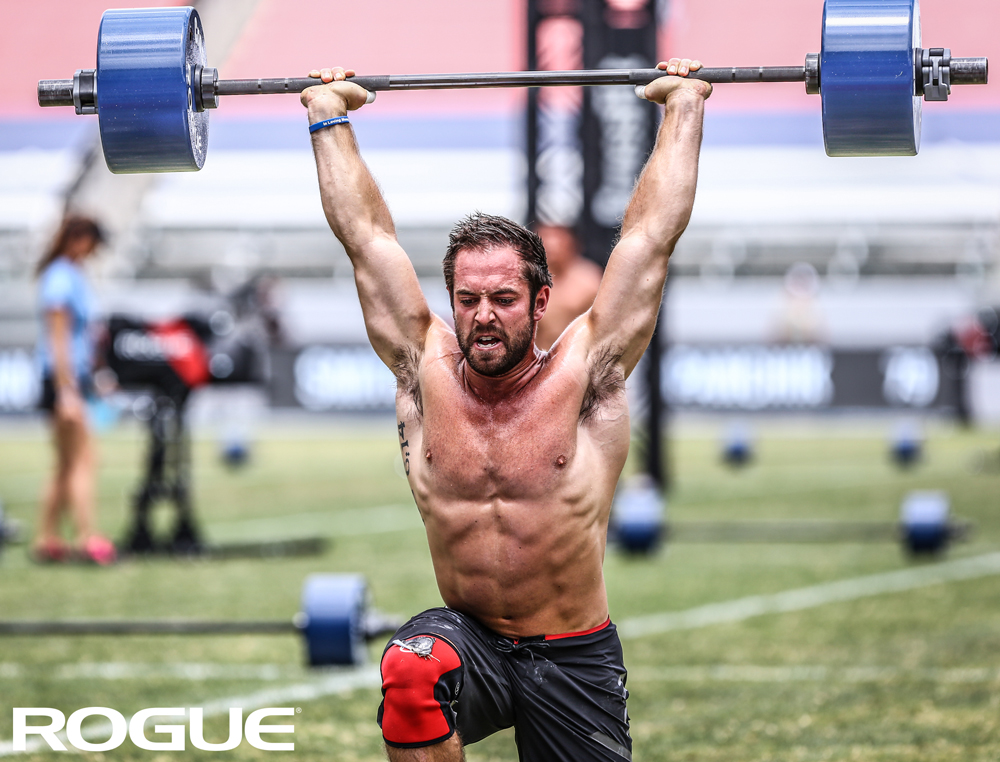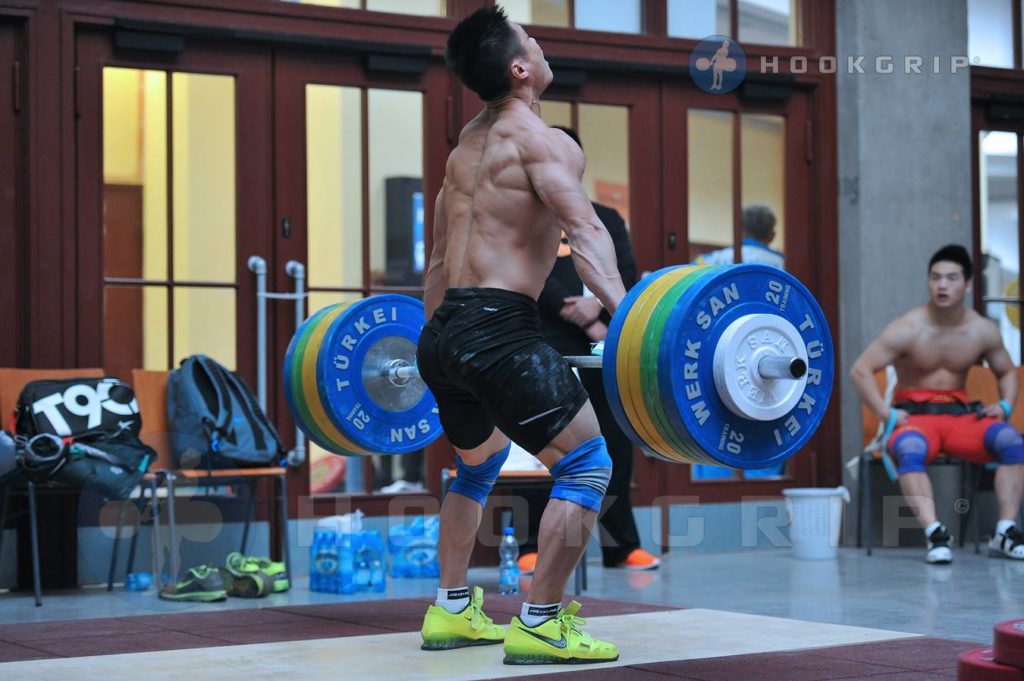“Mash Program Sampler 2” has dropped! 2- Weightlifting Programs (1 directly from the MDUSA Days), 1- Powerlifting Program, 1- Super Total, 1 Athletic Performance (Tommy Bohanon’s Program), 1 Athletic Speed, and 2 Cross Training workouts! All profits go to help support our non-profit Team, so thanks in advance!
www.mashelite.com/programsampler2/
Strong, Jacked, and Conditioned at the Same Time
Lately I get a lot of people that are new to Olympic weightlifting and powerlifting. Over the last decade the barbell has become more popular than ever thanks to CrossFit and the Internet. People of all ages, genders, and backgrounds want to learn more about barbell movements. The benefits of the barbell are undeniable: increased muscle mass, overall strength, better movement, increased athleticism, stronger bones, and stronger connective tissue to name just a few.
Another benefit of training with a barbell is the quantifiable improvements that one makes. When you can add more weight to the bar, you are stronger. However there are even more quantifiable improvements that one can make like better movement patterns and better range of motion. There are improvements that all of us can work on every time that we are in the gym, and this is what appeals to so many people.

I am so thankful for the increased popularity of the barbell. The other day someone asked to take a picture with me, and then apologized for interrupting me. They said, “I bet you get this all the time.”
I laughed and explained that yes I get asked for a picture more than I use to, but I will never get tired of people wanting to ask questions or take pictures. When people ask questions or want a picture that means they care about the barbell. I have spent my whole life’s work learning as much as possible about the movements of the barbell. It was only during the last five years that the popularity of the barbell started to skyrocket. Until then, I felt like I was all alone at times. No one really understood anything about the barbell until around 2012, and no one really cared to know. There was a time that I thought my whole life had been wasted on something that no one really cared about, and now all of you want to know about strength and fitness. So no, I will never get tired of talking to any of you about the barbell, and no, I will never get tired of taking pictures. I thank God for all of you that want to learn more.
Lately I am getting a lot of people that want to get better at powerlifting or weightlifting, but they want to be jacked and in shape as well. A lot of people are apprehensive about the strength sports because they don’t want to get fat and out of shape. Guess what? Neither do I!
I am not quite sure how the stereotype of fat powerlifters and weightlifter got started. I am assuming that most people have watched the heavyweight classes during the Olympics or maybe Strongman on television. Those men and women are the exception and not the rule. Most great weightlifters and powerlifters are jacked and tan. Well they are jacked maybe not so tan.
Guys like Ed Coan and Dan Green are ripped. Weightlifters like Lu Xiaojun look like comic book heroes. I’ve got news for all of you: fat doesn’t lift any weight. Fat is pretty much useless when it comes to strength. Muscle does all of the contracting and lengthening while lifting weights. The goal of any strength athlete is to pack on as much muscle as possible in their weight class. If you ever go to a world championships or pro-powerlifting event, you will see a bunch of very muscular men and women.

Smart weightlifters and powerlifters are also in shape. Work capacity is a big part of getting stronger. The athlete that can perform the most volume without getting over trained will always win. That’s the name of the game! Now I realize that every person has his or her own genetic make up. Some of us do better with low volume, some with high volume, and some with an in-between amount. No matter what amount of volume that fits you the best, your goal is to always up that amount. You have to stress the body to force adaptation. If you perform the same amount of volume year in and year out, you will yield the same amount of results.
Therefore, it is important to increase work capacity. There are also several studies proving that basic cardiovascular work aids in recovery, so there is a place for rowing and biking in the strength world. The big question is, “How does all of this fit?”
1. Let’s talk about being jacked! Hypertrophy should always be a part of your training. At times hypertrophy should dominate your training. No matter it should always be a part. When you are the furthest away from a meet or peaking cycle, the main goal should be adding muscle. Here are a couple of article that I have written in the past to give you some guidelines:
“Multiple Ways to Emphasize Hypertrophy”
“Hypertrophy Cycles for Athletic Performance”
However even when you are in the middle of a strength cycle, hypertrophy is still a major concern. You will always want to target weaknesses with hypertrophy. The key is identifying those weaknesses. You will also want to target muscular imbalances with hypertrophy. Asymmetries are the biggest cause of injury. You will also find that a balanced body will always be the strongest body just look at Rich Froning.

Here are a few keys:
• If you are performing exercises that are majorly eccentric in nature or active stretching with a load like RDLs, Goodmornings, or Dumbbell Flies, you will need a couple of days to recover before targeting those muscle groups. I suggest putting these exercises in when you have a day off or an active rest day is following.
• Exercises that focus on metabolic stress (fancy word for a pump) with very little muscle damage can be used more often like pec deck, leg extensions, or lateral raises. If the majority of stress comes at the peak of concentric contraction, then it is an exercise with little muscle damage. If the majority of stress comes at the peak of eccentric (negative) contraction, the exercise causes a lot of muscular damage (ex. RDL).
• The close you get to a meet or peaking cycle, I suggest limiting the exercises that create muscular damage, but keep the metabolic stress movements coming.
2. How does one stay in shape and not fat? Here are a couple of ways:
• Low eccentric and low joint loaded movements are perfect for conditioning like sled pushes, sled pulls, and carries.
• Cardio performed at 75% of maximum heart rate is perfect for strength athletes. All you have to do is read Alex Viada’s book “The Hybrid Athlete” to understand not only is this something that strength athletes can do, but it is something that they should do. By the way he runs 100 mile races and squats over 700 pounds.
Here’s an article that I wrote about conditioning for strength athletes:
⇒ “Hybrid Workouts: Strong and Conditioned”
The moral of the story is that you can be strong, jacked, and conditioned. The key is programming it all properly. If programmed correctly, all three should improve the other. Louie Simmons has been talking about this since the ‘90s, so this isn’t anything new. I am just reassuring all of you that yes, you can have it all.
==============================================
Check out one of the Online Teams:
• Mash Mafia Bronze
• Mash Mafia Silver
• Mash Mafia Gold
• Eat What You Want
• Eat and Lift What You Want
Check them out here: ⇒ Mash Mafia Online Teams
